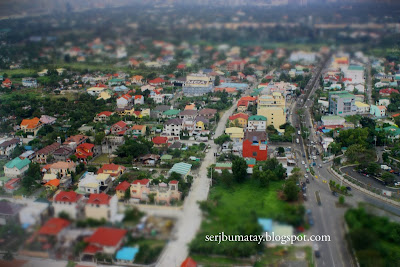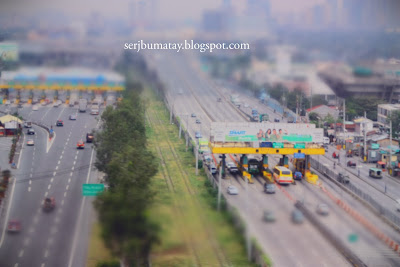
Here is a creative way to recycle the excesses we had during the holiday season. A milk carton transformed into a pinhole toy camera. There are so many great ideas to do with a milk carton but this one's easy and fun to create, the results will be rewarding.
A pinhole camera is the basic of all cameras: you just need a tiny hole as a lens to make a photograph. I was very fascinated how it works and so I made myself one. The joy of making the camera plus the anticipation in developing the image it produces is unimaginable.
The steps are simple:
1. Gather all your materials: An empty milk carton, an aluminum sheet taken from soda or chip cans, needle, very fine sandpaper, cut or exacto knife, masking tape, double-sided tape, glue or epoxy, black construction paper, white latex paint, acrylics, varnish, some photographic papers, developer and fixer. You may also use alternatives if the materials are not available.

2. Peel off carefully the plastic lid opening with a cutter. Glue a small piece of board or any small object that fits to close the hole. Take the plastic lid and trace the inner opening to the center of the box facing you or the object to be photographed, this will be the "shutter" of the milk box camera. Cut the traced opening, we will place the "lens" in here later.

3. Take a piece of your used photographic paper, cut to your desired size, and trace it at the back of the milk carton parallel to the hole on the other side. Measure an allowance to give a smaller frame for the "negative film". Cut this smaller frame, this is where the "film back" of the pinhole camera will be placed.


4. Now, cut a small aluminum sheet that will fit the opening made by the traced plastic lid. Punch the smallest pinhole you can get into the aluminum sheet using a needlepoint. The technique is to take your time to get through the sheet slowly. After making the pinhole, you will need to sand it lightly to remove the bur made in punching. Clean the pinhole thoroughly and make sure it is smooth and perfectly round as possible. This will be the "lens" of the pinhole camera.

5. Securely attach the aluminum sheet or "lens" to the opening made by the traced plastic lid inside the box. Put masking tape on the lens' space, front and back to cover the hole from dust and paint. Now you are ready to paint the inside with black, then outside with white. Make sure to sand first to remove the glossy finish of the milk carton so the paint will "stick" to the surface. You can also spray it with a primer first before painting it with a flat latex paint. You can decorate your box with any paint or objects that you like and finally seal the design with a varnish. Attach the plastic lid opening or "shutter" firmly with glue or epoxy.

6. Get your black construction paper (you may use a more durable material for this, say a felt, leather or rubber foam) and measure it accordingly to the size of your photographic paper. Fold and create the pattern to make an envelope as shown in the photo below. Cut an opening on the front side to match the opening of the box. Firmly attach this envelope to the milk box with double-sided tape to seal in the light.

7. In a dark room (if you can't have one you may use the bathroom, placing black curtains on the windows), carefully place your fresh photographic paper into the envelope, with emulsion side (glossy side) sticking to the box, then close the envelope with a masking tape. You are now ready to take your first photograph with the pinhole camera. Open the "shutter" plastic lid as you expose, which takes about 2-8 minutes if it's a dark subject and about 1-2minutes if sunny.

8. After shooting the "negative film" you may develop it with the developer and fixer inside the dark room. To make the positive print, you can sandwich the negative paper with another photographic paper, emulsion side by side and exposed to a 15w bulb then develop as you did with the negative. If you don't need a hard copy right away, you scan the negative and invert the color using Photoshop.

Some tips in shooting with the pinhole camera:
a. Patience is the key to shooting and developing
b. Select subjects that stay still because moving will cause blurry images; landscapes, architecture, and still life work best
c. Shoot outdoor with lots of lighting
d. Secure your pinhole camera firmly to avoid shake as the shutter needs to be exposed longer
Happy shooting!
***
If you like this post, please comment
I'll appreciate it very much, thank you.


















